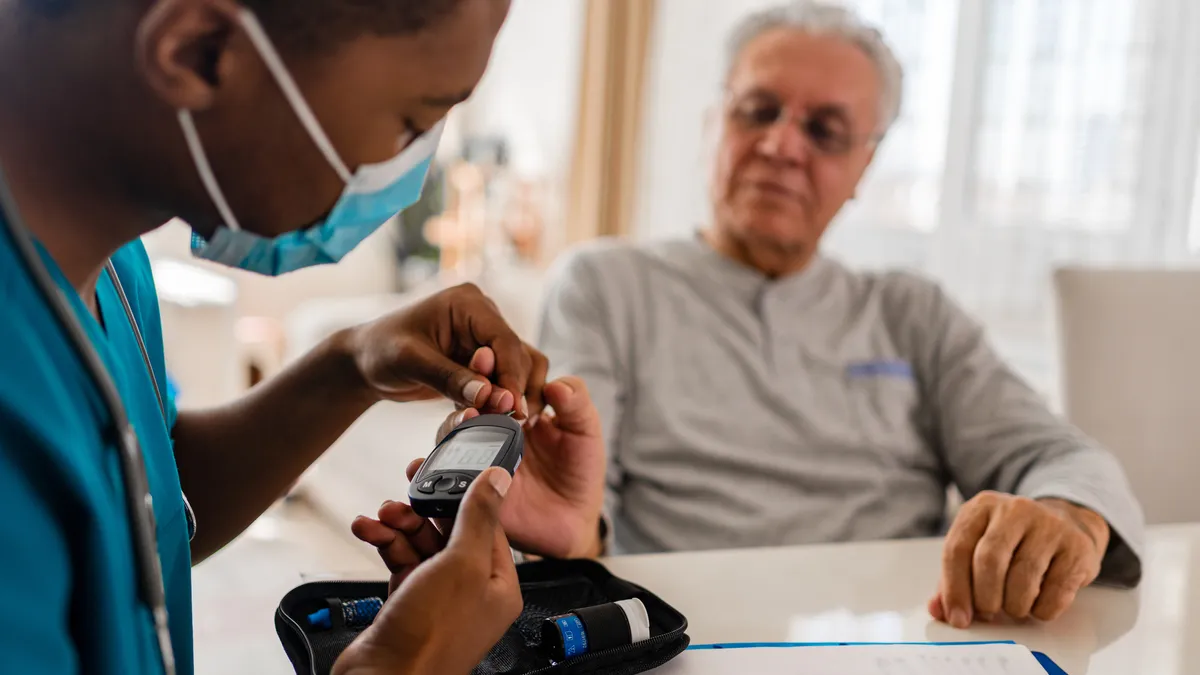Dive Brief:
- Klick Applied Sciences, after analyzing 12 hours of continuous glucose monitor data with artificial intelligence (AI), says it can identify healthy, prediabetic and diabetic individuals.
- In the study, about 600 people wore a CGM for an average of 12 days to generate a dataset that the researchers used to develop machine learning models.
- The 12-hour model correctly identified two-thirds of patients with prediabetes and achieved “high accuracy” in detecting healthy individuals and people with type 2 diabetes.
Dive Insight:
According to the Centers for Disease Control and Prevention, more than one in three American adults have prediabetes, while 80% of those cases are undiagnosed. A simple blood sugar test is used to check for prediabetes, providing a diagnosis that can lead people to lower their risk of developing Type 2 diabetes. Still, Klick sees a need for a new approach to detecting the condition.
“An overwhelming majority of people with early-onset diabetes are not aware of their condition and don’t consult a physician until their ability to control their blood sugar levels is irreparably damaged,” Michael Lieberman, managing director of research and development at Klick, said in a statement. “Our research has tremendous potential to help move blood glucose digital biomarkers into a position where they can be an invaluable tool for physicians for preventing diabetes before it starts.”
Lieberman and his colleagues developed the technology by collecting CGM data on about 600 healthy, prediabetic and Type 2 diabetic individuals. The resulting 12-hour model performed comparably to those that used data collected over longer periods of time.
Jouhyun Jeon, lead scientist of the study and principal investigator at Klick, said most similar research uses 10 to 14 days of CGM readings and often requires analysis from expert clinicians. By reducing the amount of data needed to detect prediabetes, Jeon said the work could mean CGMs are “used to not just monitor diabetes, but to prevent it altogether.”












